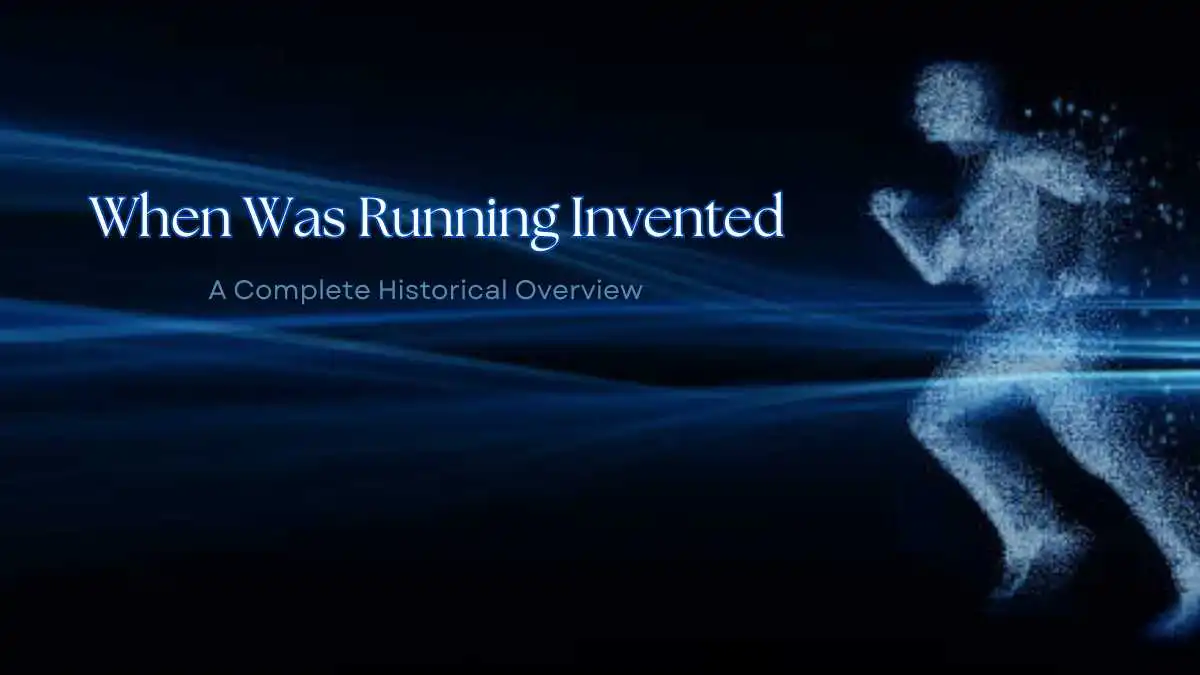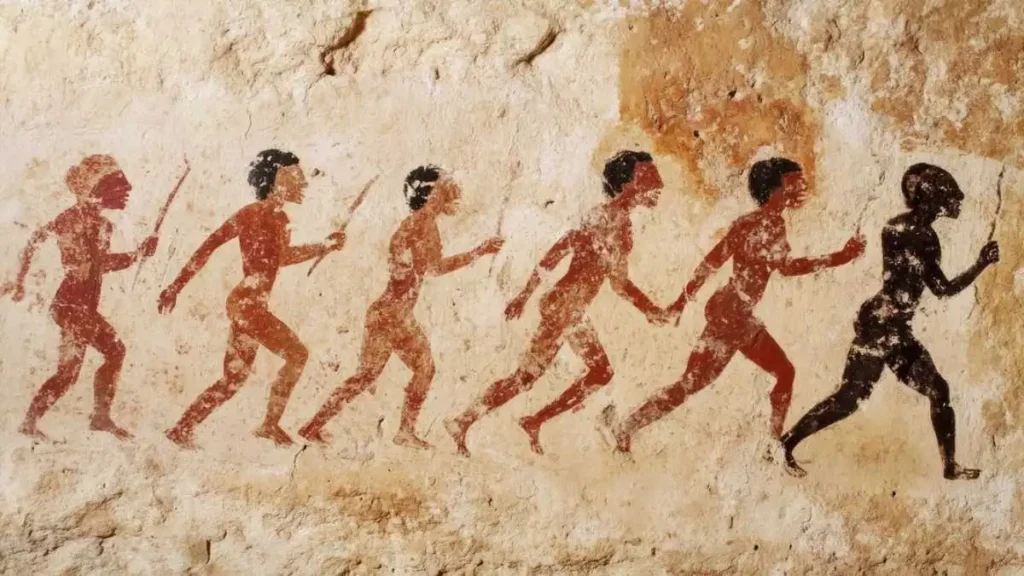EXERCISE
When Was Running Invented? A Complete Historical Overview

Running is one of the oldest activities characteristic for a human being and was needed for survival and mobility. It transformed into leisure and sport, it started as a means of fulfilling a basic need such as searching for food and fleeing from danger. Today, running is popular around the world for every level, from an ordinary jog to complicated competitions, such as marathons and sprints.
The Evolutionary Roots of Running
The ability to run is deeply rooted in human evolution. Scientists believe that early hominins, such as Homo erectus, developed endurance running as a survival mechanism around two million years ago. This allowed them to cover long distances to hunt or scavenge for food, a practice known as persistence hunting. Evolutionary traits like arched feet, long legs, and thermoregulation through sweating enabled humans to run efficiently over extended periods. It provided humans with an advantage over other animals, playing a crucial role in survival and fostering the growth of early communities dependent on hunting for sustenance.
When Did Humans Start Running?
- Australopithecus (4–2 million years ago): Early evidence of bipedal movement but not optimized for running.
- Homo erectus (2 million years ago): Known for long-distance running abilities.
- Persistence hunting: Ancient humans exhausted prey by chasing them over long distances in hot climates.
- Emergence of Homo sapiens (300,000 years ago): Fine-tuned for running, helping in migration and hunting strategies.
Running in Prehistoric Cultures
Prehistoric humans used running for both practical and symbolic purposes. Cave paintings depict people engaged in hunting, showcasing early forms. In many tribal societies, it was essential for tracking animals, escaping danger, and relaying messages between settlements. It also had ceremonial importance, symbolizing endurance and strength. Some tribes in Africa and North America incorporated it into rituals, believing it connected them with spiritual forces. These practices highlight how it was woven into the fabric of early human life, serving both functional and cultural purposes, long before it became a structured sport.

The Role of Running in Warfare and Communication
Running played a significant role in warfare, with armies training soldiers to cover long distances swiftly. Messengers or runners were vital for maintaining communication lines in large empires. The legend of Pheidippides, who ran from the battlefield of Marathon to Athens to announce victory, is perhaps the most famous historical example of a messenger run. This tale inspired the modern marathon, demonstrating its importance in ancient societies. Military forces in ancient Greece, Persia, and Rome relied on runners to send orders and updates, cementing running as a strategic tool in both war and governance.
The Invention of Organized Competitions
The earliest organized running competitions can be traced to ancient Greece, where events like the stadion race, a sprint of about 192 meters, were held during the Olympic Games. These games were not only athletic contests but also religious festivals honoring Zeus. Romans continued the tradition by organizing public races, although the competitive spirit declined during the medieval period. However, footraces re-emerged in European villages during fairs and celebrations, gradually evolving into more structured events. This shift laid the foundation for modern athletics, as competitive running began transitioning from informal village races to organized international competitions.
Birth as a Modern Sport
Unlike in the old days, competitive running was rejuvenated by the Olympic Games, most especially in 1896. Spectacles such as the marathon were included as these races were named after the ancient Greek mythology character Pheidippides. With the growing popularity of track and field events the act of running started featuring prominently in international combat. Institutionalization of structures such as the International Association of Athletics Federations (IAAF) introduced structures of regulation. There is a growth as well; notably races – for amateurs and professionals. Time went on other significant events like sprints, relay, and long distance events were added making participation from across the world.
Boom of the 1960s and 1970s
Thus, the running boom of the 1960 s and 70 s experiences a revival after the first world marathon records set. These movements by athletes such as Steve Prefontaine together with the coming of jogging culture helped ventured into running in an effort to enhance health. The Marathons and other races became less exclusive so the public got involved in the races a lot more. During this period there emerged specific shoes and programs of aerobics, and clubs to support this act. This boom did seen the discipline convert from elites running into a mass mode and a trendy way of life.
Technological Innovations
- Shoes: Development of lightweight, cushioned shoes with improved traction and support.
- Fitness trackers: Wearable devices that monitor heart rate, steps, and distance.
- Apps: Mobile apps offering training programs, GPS tracking, and virtual races.
- Biomechanics research: Advances in technology to improve running form and prevent injuries.

Conclusion
It can be so stated that running is one of the primary forms of natural movement which has grown from the necessity of a movement to hunt a meal to a sport, a type of exercising, and even a cultural practice. Age did not weaken it as a source of strength, as a means to achieve or as a link to the people. For fitness, for rivalry or for worship, it still remains an essential part of people and societies all through the globe. Society evolves day by day introducing new technologies, changing its lifestyle; however, it was popular in ancient times and remains popular right up to the present days, and will be popular in the future as well.
-

 GENERAL6 months ago
GENERAL6 months agoChristofle – For Those Who Dream of Family Heirloom Silver
-

 SPORTS8 months ago
SPORTS8 months agoDiscover the World of Football with Streameast: Watch Your Favorite Leagues and Tournaments
-

 GENERAL5 months ago
GENERAL5 months agoUncovering the World of кинокрадко: The Dark Side of Film Piracy
-

 GENERAL3 months ago
GENERAL3 months agoATFBooru: Anime, Gaming, and Subculture Imageboard


























